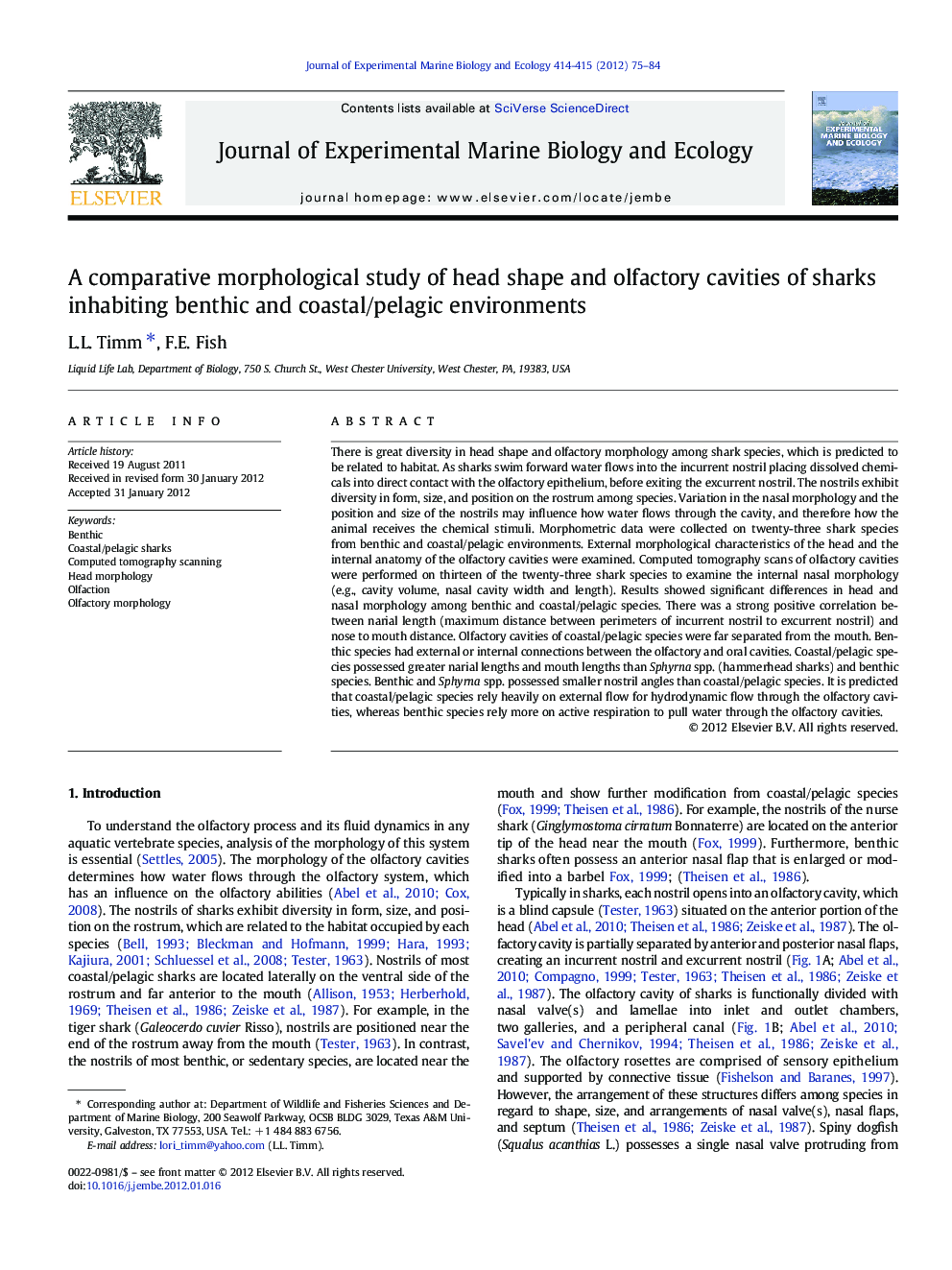| Article ID | Journal | Published Year | Pages | File Type |
|---|---|---|---|---|
| 4396027 | Journal of Experimental Marine Biology and Ecology | 2012 | 10 Pages |
There is great diversity in head shape and olfactory morphology among shark species, which is predicted to be related to habitat. As sharks swim forward water flows into the incurrent nostril placing dissolved chemicals into direct contact with the olfactory epithelium, before exiting the excurrent nostril. The nostrils exhibit diversity in form, size, and position on the rostrum among species. Variation in the nasal morphology and the position and size of the nostrils may influence how water flows through the cavity, and therefore how the animal receives the chemical stimuli. Morphometric data were collected on twenty-three shark species from benthic and coastal/pelagic environments. External morphological characteristics of the head and the internal anatomy of the olfactory cavities were examined. Computed tomography scans of olfactory cavities were performed on thirteen of the twenty-three shark species to examine the internal nasal morphology (e.g., cavity volume, nasal cavity width and length). Results showed significant differences in head and nasal morphology among benthic and coastal/pelagic species. There was a strong positive correlation between narial length (maximum distance between perimeters of incurrent nostril to excurrent nostril) and nose to mouth distance. Olfactory cavities of coastal/pelagic species were far separated from the mouth. Benthic species had external or internal connections between the olfactory and oral cavities. Coastal/pelagic species possessed greater narial lengths and mouth lengths than Sphyrna spp. (hammerhead sharks) and benthic species. Benthic and Sphyrna spp. possessed smaller nostril angles than coastal/pelagic species. It is predicted that coastal/pelagic species rely heavily on external flow for hydrodynamic flow through the olfactory cavities, whereas benthic species rely more on active respiration to pull water through the olfactory cavities.
► We examined head and nasal morphology of benthic and coastal/pelagic sharks. ► Traditional morphometrics and computed tomography scans were performed. ► Diversification in morphology is associated with habitat. ► Variation in morphology may be correlated with water flow through olfactory cavity.
